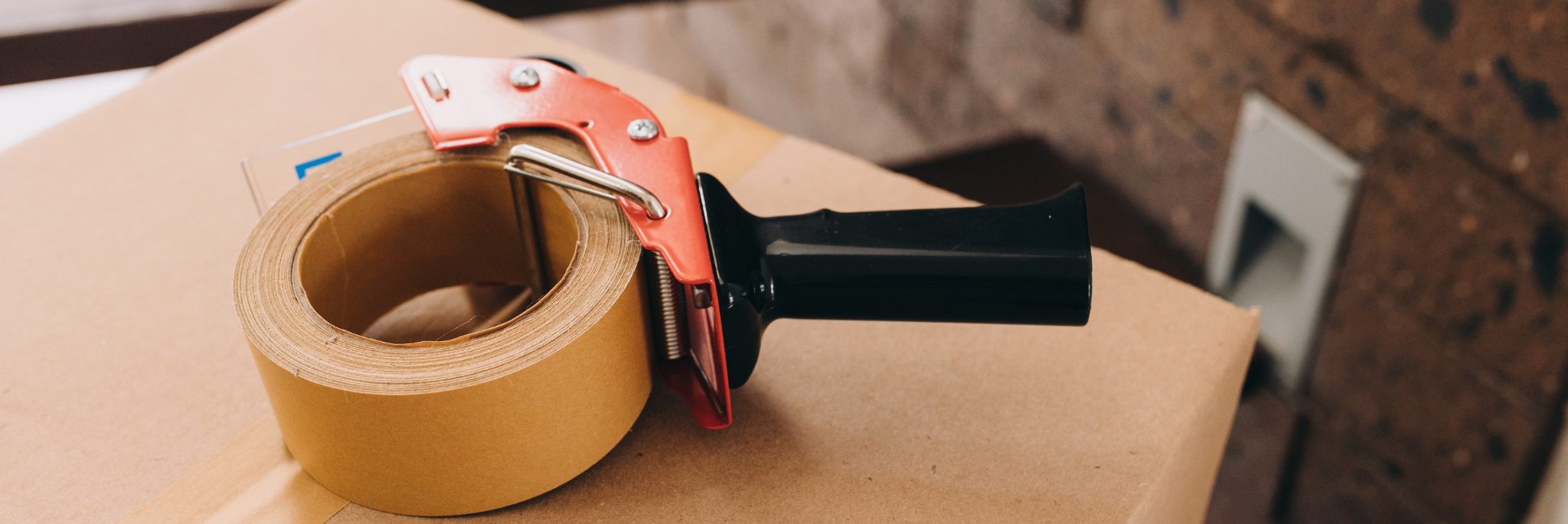Paper Tape VS Polypropylene Tape
In the realm of packaging, the choice of tape can significantly impact the efficiency, sustainability, and effectiveness of securing parcels. Two commonly used options are paper tape and polypropylene (BOPP) packing tape. Each comes with its own set of advantages and considerations, making the decision between them a matter of balancing needs and priorities.
Paper Packing Tape:
- Environmentally Friendly: One of the primary appeals of paper packing tape is its eco-friendly nature. Made from renewable resources and biodegradable materials, paper tape presents a sustainable alternative to traditional plastic tapes. For businesses prioritising environmental responsibility, paper tape aligns well with sustainability goals.
- Recyclability: Paper packing tape is easily recyclable alongside cardboard boxes, simplifying the disposal process and minimising waste. This characteristic makes it an attractive choice for businesses aiming to reduce their environmental footprint.
- Ease of Use: Despite misconceptions about its strength, modern paper packing tape offers robust adhesion and tear resistance, ensuring secure packaging without compromising on usability. With advancements in paper materials and adhesives, paper tape can directly swapped out for plastic tape in most machine applications and nearly all manual dispenser applications, facilitating efficient packaging processes.
Polypropylene (BOPP) Packing Tape:
- Strength and Durability: Polyprop packing tape boasts strength and durability, making it suitable for securing heavy or bulky packages. Its resistance to tearing and moisture ensures packages remain intact during transit, reducing the risk of damage or tampering.
- Versatility: Polyprop tape is compatible with various surfaces, including cardboard, plastic, and metal, providing flexibility in packaging applications. Whether sealing boxes for storage or shipping, polyprop tape offers reliable adhesion across different materials, enhancing its utility in diverse settings.
- Cost-Effectiveness: Polyprop tape is a widely accessible, cheap material which makes it a cheaper material to paper tape. Businesses handling large volumes of packages may find polyprop tape to be a cost-effective solution, reducing the need for additional reinforcement such as strapping or reinforced paper tape.
Choosing the Right Tape:
When deciding between paper tape and polyprop tape, it's essential to consider specific factors such as sustainability goals, packaging requirements, and budget constraints.
- Environmental Impact: For businesses prioritising sustainability and eco-friendliness, paper packing tape emerges as the preferred choice due to its renewable composition and recyclability.
- Strength and Security: When dealing with heavy or fragile items, polyprop packing tape is generally more flexible and stronger, ensuring secure packaging and minimising the risk of damage during transit. However, there is fibre or nylon reinforced paper tapes available for heavy duty applications if required.
- Cost Considerations: While paper tape may have a higher upfront cost, it is a sustainable product with much lower environmental impact which may reflect your company better to your customers.
In conclusion, both paper tape and polyprop tape have distinct advantages depending on specific packaging requirements and priorities. By carefully evaluating factors such as environmental impact, strength, versatility, and cost, businesses can make informed decisions to optimise their packaging processes and meet their objectives effectively.
